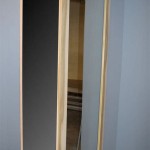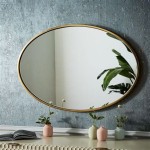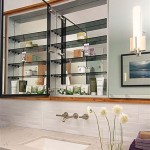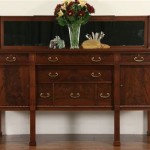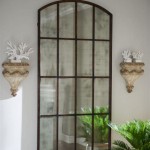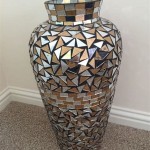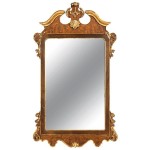How To Check If A Mirror Is Double Sided
Determining whether a mirror is double-sided, also known as two-way, involves more than just a casual glance. While two-way mirrors are often depicted in spy movies and crime dramas, they exist in real-world settings like interrogation rooms, observation decks, and some security applications. Differentiating a standard mirror from a two-way mirror requires a combination of observational techniques and practical tests.
The fundamental difference between a standard mirror and a two-way mirror lies in the reflective surface. A standard mirror uses a thick, opaque layer of reflective material, typically silver or aluminum, applied to the back of a piece of glass. This prevents light from passing through. A two-way mirror, on the other hand, uses a thin metallic coating that allows some light to pass through while also reflecting a portion of it. This creates the illusion of a mirror on one side while allowing observation from the dimly lit other side.
One of the simplest initial checks involves evaluating the surrounding environment. Two-way mirrors are typically installed between two spaces, one brightly lit and the other significantly dimmer. The brighter side appears as a regular mirror, while the dimmer side allows for observation. If the mirror is in a location where such a lighting discrepancy is possible, such as a security checkpoint or an interrogation room, it raises the possibility of it being a two-way mirror.
The "fingernail test" is a commonly referenced, but often misinterpreted, method. Placing a fingernail against the surface of the mirror can provide some clues, but it is not definitive. With a standard mirror, a distinct gap will be visible between the fingernail's reflection and the fingernail itself due to the glass layer. With a two-way mirror, this gap might appear smaller or even non-existent because the reflective coating is applied directly to the glass surface or embedded within a thin layer of plastic. However, variations in mirror construction can make this test unreliable. Some standard mirrors may have a protective coating that minimizes the perceived gap, leading to a false positive for a two-way mirror.
A more reliable method involves observing the reflectivity of the mirror. In a well-lit environment, a standard mirror reflects almost all incident light. A two-way mirror, due to its partially transmissive nature, reflects less light. Comparing the suspected mirror's reflectivity to a known standard mirror can reveal this difference. If the suspected mirror appears dimmer or less reflective, it could indicate a two-way design.
The "flashlight test" offers another way to assess the mirror's properties. By shining a bright flashlight directly onto the mirror's surface, one can observe the light's behavior. With a standard mirror, the light will be reflected back intensely. However, with a two-way mirror, some light will pass through to the other side. If a concealed observation area exists behind the mirror, the flashlight's beam might be visible within that space. This test is most effective in a darkened environment.
Perhaps the most definitive way to determine if a mirror is two-way is to attempt to see through it. This requires altering the lighting conditions on both sides of the mirror. If possible, darken the room in which the mirror is located and introduce a bright light source on the other side. If the mirror is two-way, the difference in lighting levels will allow visibility through the mirror from the darkened side, revealing the space beyond.
It’s crucial to understand that while these methods can provide indications, definitive identification of a two-way mirror can be challenging without specialized equipment. If there is a serious concern about the presence of a two-way mirror, especially in a location where privacy is paramount, consulting security professionals or law enforcement is recommended. They possess the expertise and tools to effectively assess and confirm the nature of the mirror.
The presence of two-way mirrors raises legitimate privacy concerns. Individuals should be aware of the potential for surveillance in certain environments and exercise caution accordingly. Understanding the methods for identifying these mirrors can empower individuals to better protect their privacy.

How To Tell If A Mirror Is Two Way Or Not 8 Steps With Pictures

How To Tell If A Mirror Is Two Way Or Not 8 Steps With Pictures

How To Tell If A Mirror Is Two Way Or Not 8 Steps With Pictures Hotel Mirrors Double Sided

How To Tell If A Mirror Is Two Way Or Not Quora

How To Tell If A Mirror Is Two Way Or Not 8 Steps With Pictures

How To Tell If A Mirror Is Two Way Or Not 8 Steps With Pictures

Tips For Identifying Whether Your Mirror Is Two Way Or Not Ledmyplace

How To Tell If A Mirror Is One Way Glass Boing

How To Tell If A Mirror Is Two Way Or Not 8 Steps With Pictures
How To Tell If A Mirror Is Two Way Or Not Quora

